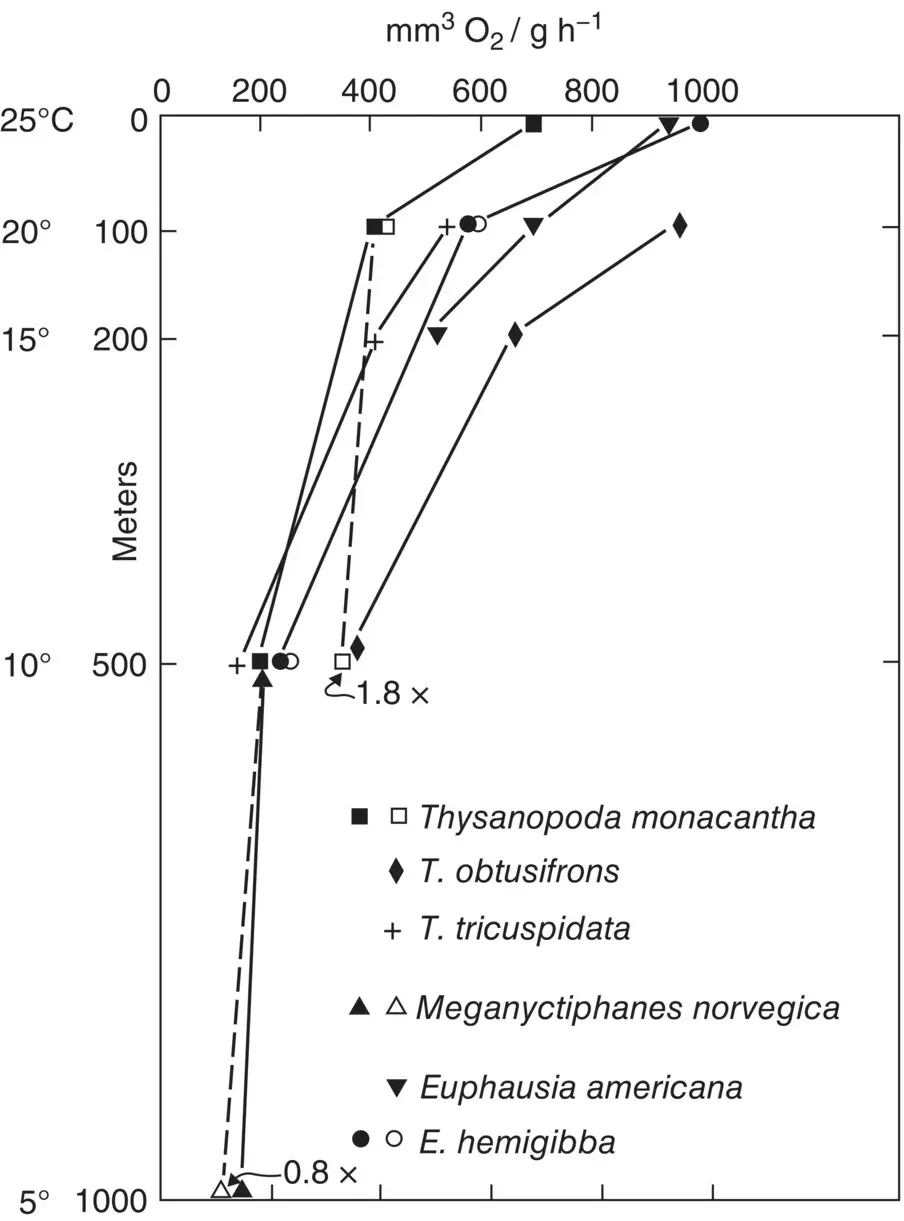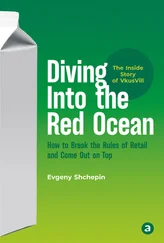Joseph J. Torres - Life in the Open Ocean
Здесь есть возможность читать онлайн «Joseph J. Torres - Life in the Open Ocean» — ознакомительный отрывок электронной книги совершенно бесплатно, а после прочтения отрывка купить полную версию. В некоторых случаях можно слушать аудио, скачать через торрент в формате fb2 и присутствует краткое содержание. Жанр: unrecognised, на английском языке. Описание произведения, (предисловие) а так же отзывы посетителей доступны на портале библиотеки ЛибКат.
- Название:Life in the Open Ocean
- Автор:
- Жанр:
- Год:неизвестен
- ISBN:нет данных
- Рейтинг книги:5 / 5. Голосов: 1
-
Избранное:Добавить в избранное
- Отзывы:
-
Ваша оценка:
- 100
- 1
- 2
- 3
- 4
- 5
Life in the Open Ocean: краткое содержание, описание и аннотация
Предлагаем к чтению аннотацию, описание, краткое содержание или предисловие (зависит от того, что написал сам автор книги «Life in the Open Ocean»). Если вы не нашли необходимую информацию о книге — напишите в комментариях, мы постараемся отыскать её.
Life in the Open Ocean: The Biology of Pelagic Species
Life in the Open Ocean: The Biology of Pelagic Species
Life in the Open Ocean — читать онлайн ознакомительный отрывок
Ниже представлен текст книги, разбитый по страницам. Система сохранения места последней прочитанной страницы, позволяет с удобством читать онлайн бесплатно книгу «Life in the Open Ocean», без необходимости каждый раз заново искать на чём Вы остановились. Поставьте закладку, и сможете в любой момент перейти на страницу, на которой закончили чтение.
Интервал:
Закладка:
Whole Animal Work
The first study of pressure effects on an animal normally living under pressure was that of Napora (1964) who tested pressure effects on the vertically migrating prawn Systellaspis debilis . In the western Atlantic, where Napora did his work, Systellaspis resides between depths of 500 and 1800 m during the day and 300 and 350 m at night. Napora found that increased pressure resulted in an increased metabolism (measured as oxygen consumption rate) between temperatures of 3 and 20°C and pressures of 0 and 1500 psi. The conclusion from his study was that increases in metabolism as a result of pressure effects offset the decline in metabolism due to the lower temperatures at daytime depth, resulting in a more constant metabolic rate over the diel cycle.
Two additional studies, Teal and Carey (1967) and Teal (1971), improved on Napora’s original work, also using species from the northwestern Atlantic. In the first study, the effects of pressure between 0 and 1000 atm were tested on a suite of migrating euphausiids, shrimplike Crustacea 10–25 mm in size found in pelagic waters throughout the world ocean ( Chapter 7). The physiological process monitored was once again oxygen consumption rate. Measurements took place at temperatures between 5 and 25 °C, which are typical of the species’ vertical range. Oxygen consumption rate (VO 2) was monitored continuously with an oxygen electrode as individuals were rapidly compressed, allowed to remain at pressure for 15–30 minutes, then decompressed. Temperature and pressure were both changed acutely, i.e. without allowing the animal time to acclimate to either variable. Several species of euphausiids were tested in this manner, most of which were epipelagic migrators that came to or near surface waters at night from daytime depths of 200 to 500 m. The rationale for acute measurements was that animals experiencing rapid temperature and pressure changes in the field would be fine with similar treatment in the laboratory, an assumption which was experimentally verified.
The results of the first study ( Figure 2.18) showed a different response to pressure in epipelagic migrators (e.g. Euphausia hemigibba ) than in the mesopelagic migrators ( Thysanopoda monocantha ) that did not go to the upper 50 m of the water column during their nightly migration. Pressure showed no significant effect on metabolism in epipelagic migrators at pressure and temperatures typical of their normal environment. Pressure increased VO 2only when experimental temperatures and pressures were out of synchrony with those in their normal environment. That is, pressure had no effect unless the pressure–temperature combinations were those that the animals would never normally encounter. In the mesopelagic migratory species Thysanopoda monocantha, pressure increased VO 2enough to offset some of the effects of the lower temperature of their daytime depth such that VO 2remained fairly constant the animal’s normal depth range.

Figure 2.18 Respiration of euphausiids plotted against depth using the indicated depth‐temperature distribution, which is typical of summer open‐ocean conditions. The solid symbols indicate respiration determined solely by temperature. Where pressure has a significant effect, an open symbol includes the effect of both factors.
Source: Adapted from Teal and Carey (1967), figure 5 (p. 730). Reproduced with the permission of Elsevier.
The study’s overall conclusions were that
1 Temperature alone determines VO2 in epipelagic vertical migrators
2 Temperature and pressure working in tandem in mesopelagic vertical migrators make VO2 more constant over the vertical range of the species.
Teal’s 1971 follow‐up study dealt with pressure effects on migrating mesopelagic decapod crustaceans, including Systellaspis debilis , the experimental species of Napora (1964). His results were similar to those of Napora and to his own 1967 study on euphausiids: pressure increased VO 2in the vertically migrating mesopelagic species resulting in a more stable VO 2over their vertical range. Thus, three studies supported conclusion number 2 above. We can add a third conclusion from work on non‐migrating mesopelagic species: pressure has little or no effect on the VO 2of non‐migratory mesopelagic species (Meek and Childress 1973).
Molecular Mechanisms of Adaptation to Pressure
The fact that deeper‐living species seemed insensitive to pressure piqued the curiosity of biochemical physiologists seeking a molecular basis for the observed data. Using the enzymatic reactions of intermediary metabolism as an experimental system, several studies explored the effects of pressure on deeper‐living species. Their a priori reasoning took them back to the basic thermodynamic properties of chemical reactions, which are governed not only by temperature and the concentration of reactants but also by differences in the volume of the reaction system when reactants are changed into products.
1 If a reaction takes place with no volume change, pressure has no effect.
2 If volume increases during the course of the reaction, pressure will inhibit it.
3 If volume decreases, pressure will enhance it.
If reaction rates are expressed incorporating a pressure term, the equation looks like this:
(2.2) 
where P is the pressure (atm), T is the absolute temperature (°K), R is the universal gas constant (82 cm 3atm °K −1mol −1), K Dis the rate constant at 1 atm, K Pis the rate constant at P atm, and ∆ V ‡is the activation volume of the reaction; the change in system volume occurring during the rate‐limiting step of the reaction, in this case, the activation step.
What is the source of changes in volume in enzymatic reactions? First, consider the total reaction system as the water in which the reactions take place, the enzyme itself, and its substrate or ligand. Those three elements of the system are water–protein–ligand (Hochachka and Somero 1984). Pressure will affect a reaction if there is a volume change in any element of the reaction system during the transition from reactants to products. Though intuitively one might expect that changes in the volume of the enzyme protein during the course of the reaction or production of a higher or lower volume product would be the main source of volume change, most volume changes are actually due to changes in the structure of water. The side‐chains of the enzyme protein’s amino acids are surrounded by a layer of highly organized water, and this water has a higher density (smaller volume) than the bulk water of the system. Enzymatic reactions by their nature alter the organization of water around the molecule.
The alteration can take several forms (Hochachka and Somero 1984). During ligand binding, the highly organized water may be squeezed out into the bulk phase of the system as the two molecules come together, increasing the total volume of the reaction system. Similarly, when two subunits of an enzyme protein come together to form an aggregate, water can be squeezed out into the bulk phase, increasing system volume. Changes in conformation of the enzyme protein during the reaction can also result in volume change. In one case, exposure to the aqueous medium of hydrophobic residues normally packed within the molecule would increase system volume and would respond negatively to increased pressure. In the opposite case, a normally buried hydrophilic amino acid side‐chain exposed to the aqueous medium would allow water to become more densely organized around it, resulting in a decline in volume relative to the bulk water and exhibiting a positive response to increased pressure.
Читать дальшеИнтервал:
Закладка:
Похожие книги на «Life in the Open Ocean»
Представляем Вашему вниманию похожие книги на «Life in the Open Ocean» списком для выбора. Мы отобрали схожую по названию и смыслу литературу в надежде предоставить читателям больше вариантов отыскать новые, интересные, ещё непрочитанные произведения.
Обсуждение, отзывы о книге «Life in the Open Ocean» и просто собственные мнения читателей. Оставьте ваши комментарии, напишите, что Вы думаете о произведении, его смысле или главных героях. Укажите что конкретно понравилось, а что нет, и почему Вы так считаете.












